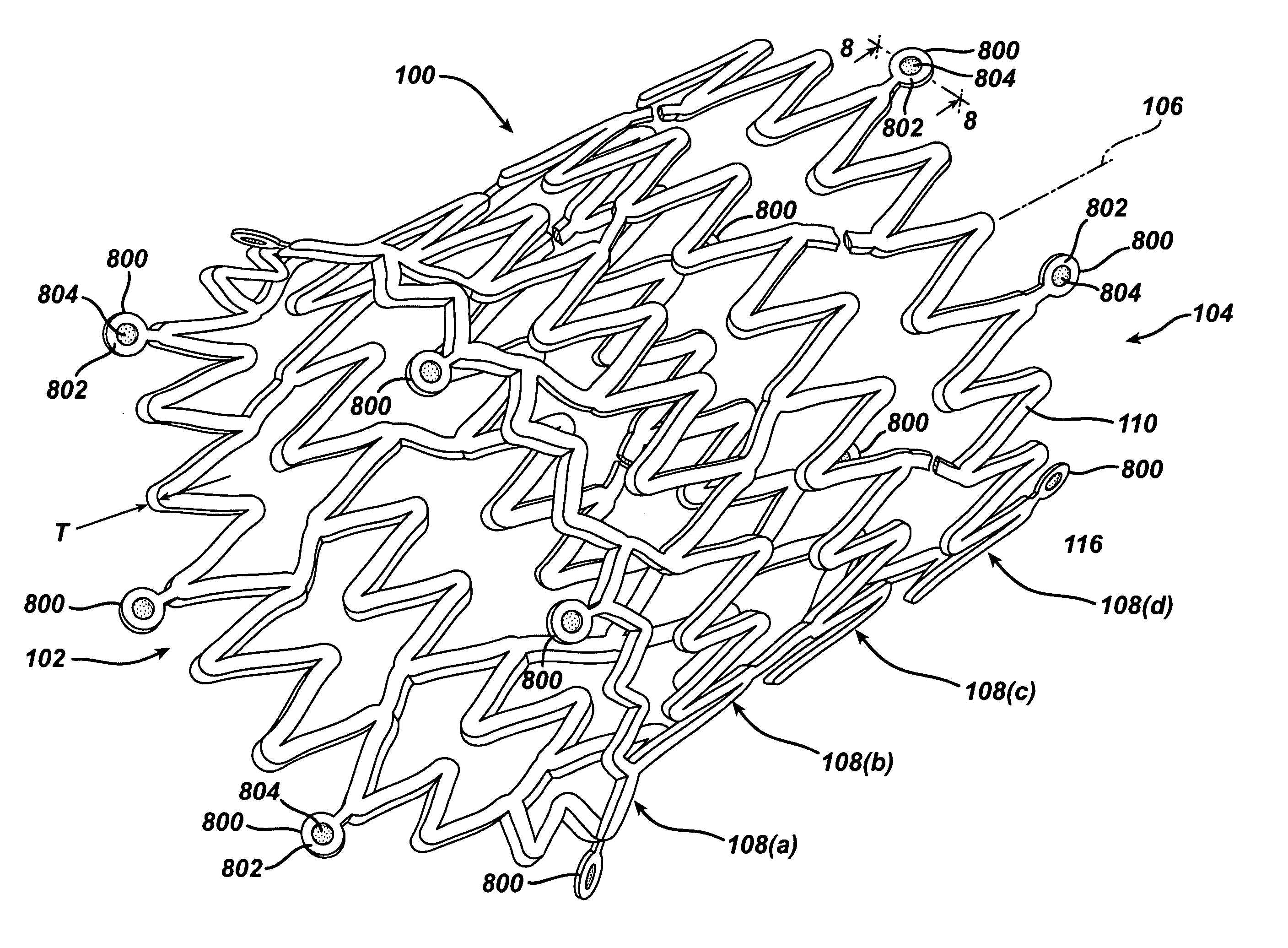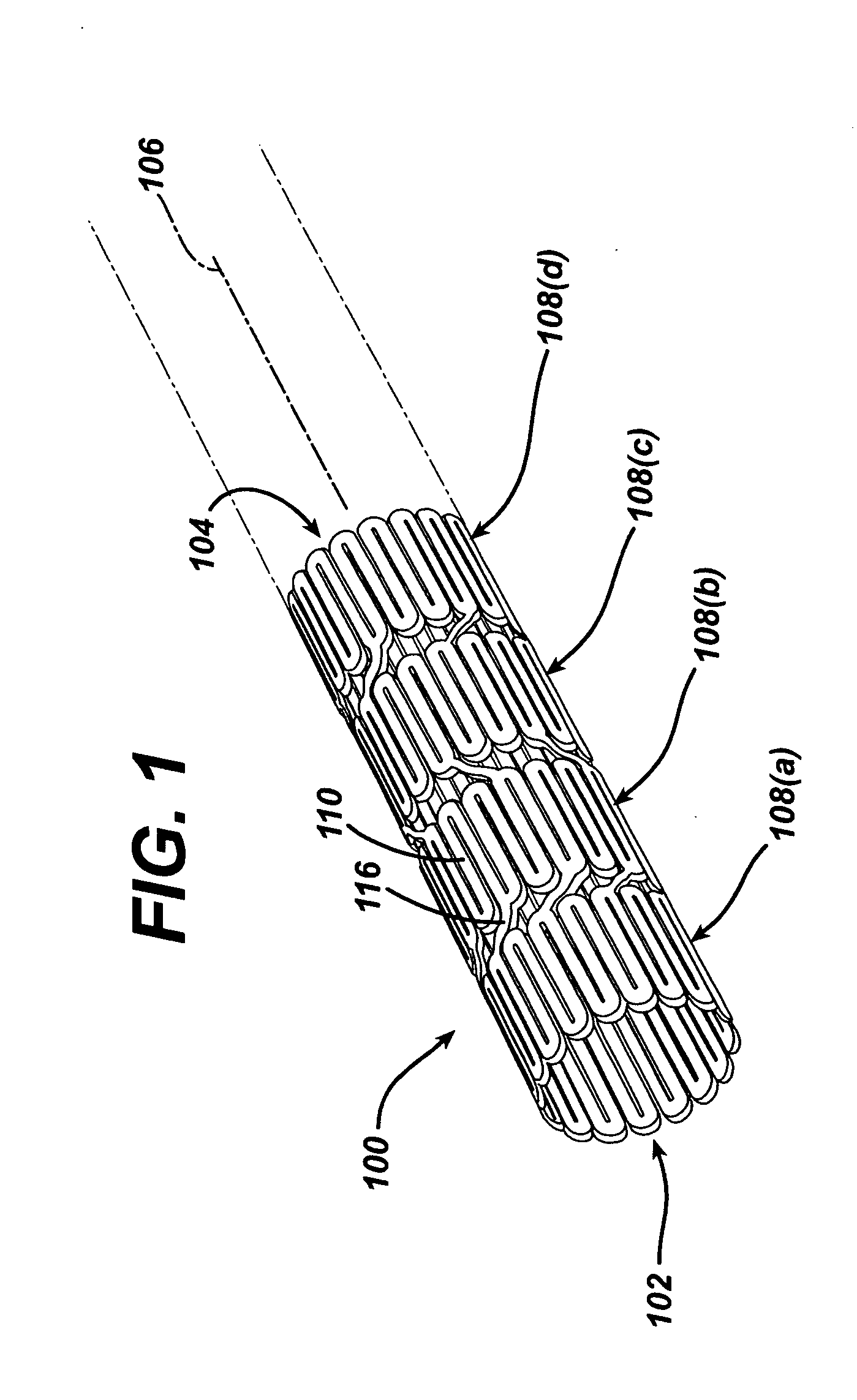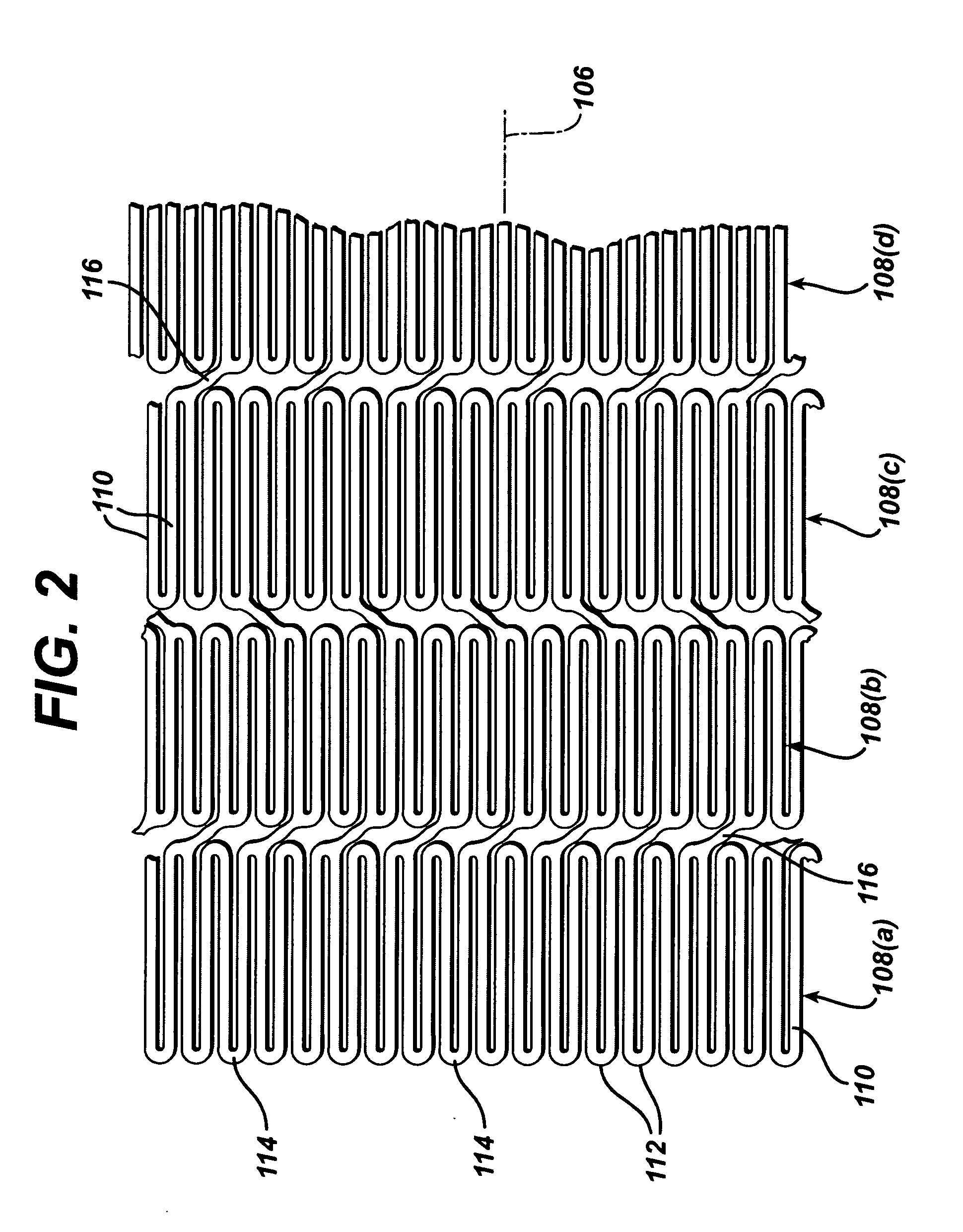Stent design having stent segments which uncouple upon deployment
a technology of stent segments and anvils, applied in the field of stents, can solve problems such as open gaps between unconnected tips or loops
- Summary
- Abstract
- Description
- Claims
- Application Information
AI Technical Summary
Benefits of technology
Problems solved by technology
Method used
Image
Examples
Embodiment Construction
[0054] While the present invention may be used on or in connection with any number of medical devices, including stents, for ease of explanation, one exemplary embodiment of the invention with respect to self-expanding Nitinol stents will be described in detail. There is illustrated in FIGS. 1 and 2, a stent 100, which may be utilized in connection with the present invention. FIGS. 1 and 2 illustrate the exemplary stent 100 in its unexpanded or compressed state. The stent 100 is preferably made from a superelastic alloy such as Nitinol. Most preferably, the stent 100 is made from an alloy comprising from about 50.0 percent (as used herein these percentages refer to weight percentages) Ni to about 60 percent Ni, and more preferably about 55.8 percent Ni, with the remainder of the alloy being Ti. Preferably, the stent 100 is designed such that it is superelastic at body temperature, and preferably has an Af in the range from about twenty-four degrees C. to about thirty-seven degrees C...
PUM
 Login to View More
Login to View More Abstract
Description
Claims
Application Information
 Login to View More
Login to View More - R&D
- Intellectual Property
- Life Sciences
- Materials
- Tech Scout
- Unparalleled Data Quality
- Higher Quality Content
- 60% Fewer Hallucinations
Browse by: Latest US Patents, China's latest patents, Technical Efficacy Thesaurus, Application Domain, Technology Topic, Popular Technical Reports.
© 2025 PatSnap. All rights reserved.Legal|Privacy policy|Modern Slavery Act Transparency Statement|Sitemap|About US| Contact US: help@patsnap.com



